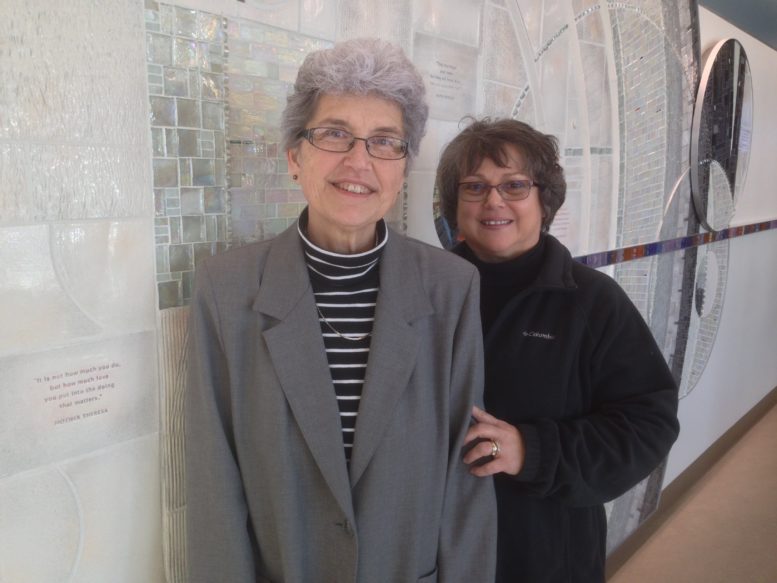By DAVID DUPONT
BG Independent News
Even in retirement, Nancy Orel stuck by some of a gerontologist’s favorite reading – obituaries and the coroner’s report.
In the listing from the coroner’s office, she noticed something interesting. Of the six people listed as dying from opioid overdoses, three, were over 50. Yet when she went to see what programs were available to help address the toll the opioid epidemic is taking on older Americans, she couldn’t find any.
She mention it to those engaged in the battle against opioid addiction, and they would not have given older Americans any thought.
True the greatest number of addicts are under 50, but the rates of addiction and abuse are raising faster among those 54 and older.
The federal Center for Disease Control doesn’t even keep tabs on how many older Americans die from opioids, she said. (The Wood County Health District does a better job, she said.)
So when interim Dean Sue Houston, of Bowling Green State University, called Orel in to see if she maybe wanted to come out of retirement, she said “yes.” She’d retired as associate dean of the College of Health and Human Services less than a year before. Though she was enjoying retirement, she saw something more needed to be done.
Orel told Houston that when she first proposed creating the Optimal Aging Institute it was to promote the research being done at BGSU on aging related issues, and foster more research. The Optimal Aging Institute was launched in March 2016 with a $1 million grant from Medical Mutual of Ohio.
In November Orel took on the newly created position of executive director of research for the institute. That represents a shift at the institute.
The institute will continue its focus on the aging in place and age-friendly communities under executive director Paula Davis working with the Wood County Committee on Aging. Denise Niese, executive director of the Committee on Aging, said the two groups have worked in tandem on programming, and now all programs will be offered in conjunction with the committee to avoid duplication.
Orel will direct the new research driven initiative, also working with Niese of the Committee on Aging.
They have a long-standing close working relationship. In 2005, they created the No One Is Immune project that dealt with seniors and HIV/AIDS. Orel said back then “no one was assuming older adults were at risk for HIV. No one is assuming older adults are at risk for opioid overdose or addiction. Because of that no one is doing prevention education programs.”
When she looked around at agencies dealing with the elderly, she found they had information on how opioids can be used to address chronic pain “but nothing warning them about opioid overdoses or how the opioid crisis affects them personally.”
Older patients are three times more likely to be prescribed opioids than younger patients, in part because they suffer more chronic pain.
At this point the initiative is still in the formative stages. Orel and Niese are finishing up a grant proposal for funding from Cardinal Health.
Orel said she hopes programming will begin in spring. “I know we’ll start it in Wood County and extend it throughout Ohio and possibly nationally.”
As with the HIV programming, the initiative will cast a wide net to get address a specific concern.
In 2005 the program was promoted as addressing elders and sexuality. This was an acute problem, Niese said, especially given the emergence of drugs for erectile dysfunction. Those programs also included information on HIV/AIDS. The Health Department reported a record number of AIDS tests being administered because of the effort.
Now the opioid program will offer a range of information on the effects of drugs, including on sexuality, Niese said.
The concerns are many and complex.
Niese said older people were taught never to question their doctors or pharmacists.
Orel knows a woman who had back pain. It turned out to be a cyst that needed treatment out of town. Her doctor prescribed fentanyl. She had no idea what it was. All she knew is that the doctor warned her about not letting anyone know what she was getting at the pharmacy and to keep the drug locked up. The patient called her sister who is a nurse.
Her sister warned her not to take it and worked with the doctor to find an alternative. This was back in June, and the woman is still getting treatment for her back. If she’d just filled the prescription, she’d be hooked by now, and not able to continue working.
Others are not as fortunate to have someone knowledgeable to consult.
Niese spoke of another elder whose health declined after he started to take pain killers and fell.
Orel said the numbers of elders who die because of opioids is underestimated because officials don’t take into account that a fall may have been caused by drug-induced dizziness or confusion.
And once an elder falls, they are more susceptible to pneumonia, Niese said.
Also, some may think that if one pill makes them feel good, a second will make them feel better, Niese said. “They don’t understand that these scripts are so precarious, just a little of this drug has such dire implications.”
The senior center has a nurse and social worker on staff to address any symptoms that someone is having a problem.
Orel said that Adult Protective Services has seen an increase in the number of elders who are being financially exploited by children or grandchildren who are addicted and trying to get money for drugs.
Also, “if they have adult children who are abusing, they become grandparents who are parents” to their grandchildren, she said.
Orel said she’d like to launch on online assessment tool, that elders can see what their risk is, or for their children to watch for danger signs.
That early warning may well keep them off the coroner’s list.




